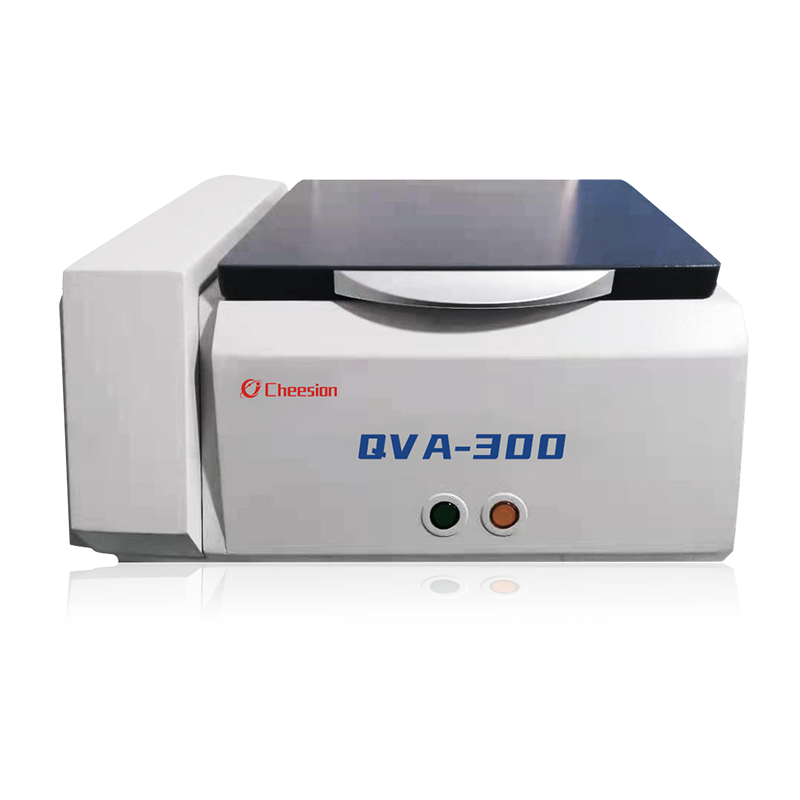The vacuum-type X-ray fluorescence (XRF) spectrometer is a high-precision elemental analysis instrument. By operating in a vacuum environment, it eliminates the absorption of X-rays by gases in the air, enabling highly sensitive detection of light elements such as sodium, magnesium, aluminum, and silicon.
The vacuum-type X-ray fluorescence (XRF) spectrometer is a high-precision elemental analysis instrument. By operating in a vacuum environment, it eliminates the absorption of X-rays by gases in the air, enabling highly sensitive detection of light elements such as sodium, magnesium, aluminum, and silicon. Compared to conventional XRF spectrometers, vacuum XRF systems experience less energy loss in low-energy X-ray transmission, producing clearer signals and significantly enhancing sensitivity and accuracy for light element detection. With its non-destructive, fast, and user-friendly operation, it finds widespread applications in fields such as scientific research, environmental monitoring, mineral analysis, metal processing, semiconductors, and materials science.
SPECIFICATION
| Parameter | Specification |
|---|---|
| Model | QVA 200 |
| Element Analysis Range | From Sodium (Na) to Uranium (U) |
| Element Concentration Range | From PPM to 99.99% (depends on material & element range) |
| Measurement Time | 50 to 200 seconds |
| Power Supply | AC 220V ±5% (purified/stabilized power recommended) |
| Energy Resolution | 129 ±5 eV |
| Sample Size | 400 x 340 x 80mm |
| Instrument Size | 700 x 510 x 336mm |
| Weight | 56 kg |
| Operating Temperature | 15°C to 30°C |
| Analysis Repeatability | 0.05% (for items ≥96% purity, 21 tests) |
| Simultaneous Element Analysis | Dozens of elements simultaneously |
| Selectable Analysis Models | Unlimited customizable analysis/identification models |
| Matrix Effect Correction | Independent correction models provided |
| Regression Program | Multivariable nonlinear regression included |
Special Recommendation: QVA 300

| Category | Specifications |
|---|---|
| Technical Specifications | Model: QVA 300 |
| Element Analysis Range | Sodium (Na) to Uranium (U) |
| Element Concentration | ppm to 99.99% (varies by element) |
| Measurement States | Powder, solid, liquid |
| Best Resolution | 129eV ±5eV |
| Analysis Time | Adjustable (1-120 seconds) |
| Cooling Method | Electric cooling (no consumables) |
| Sample Chamber Size | 400mm x 340mm x 80mm |
| External Dimensions | 700mm x 510mm x 336mm |
| Power Supply | AC 220V ±5V, 50Hz |
| Operating Environment | 15°C–35°C; ≤80% RH (non-condensing) |
| Weight | 56kg |
| Hardware Advantages | |
|---|---|
| Detector | SDD (Silicon Drift Detector), 129eV resolution, high P/B ratio |
| X-ray Tube | 50W max power, 5-50KV voltage, 0-1000µA current |
| High-voltage Supply | 0-50KV/0-1000µA, ≤0.05% stability after 8hr |
| Signal Processor | Imported, 4096 channels, auto gain adjustment |
| Performance Features | |
|---|---|
| Analysis Efficiency | Simultaneous multi-element analysis in 1-120s via self-developed software |
| Collimating Optics | Collimator + multi-filter system (software-controlled switching) |
| SES Signal Processing | Digital multi-channel system for enhanced P/B ratio |
| Cooling System | Multi-dimensional cooling design for X-ray safety |
| Vacuum System | Optimized for light elements (Mg, Al, Si, P) analysis |
| Radiation Protection | Multi-layer shielding (class-leading safety) |
| Core Temp Monitoring | Ensures X-ray source longevity |
| Software Capabilities | |
|---|---|
| XRF Analysis Software | Co-developed with Danaher (USA), supports: • Empirical coefficient • Theoretical alpha coefficient • Linear/quadratic calibration |
Handheld Alloy X-ray Fluorescence (XRF) Spectrometer QA200/300
Benchtop X-ray Fluorescence (XRF) Spectrometer QSEDX100A/100B
RoHS Compliance X-ray Fluorescence (XRF) Spectrometer QSRoHS-200/300
Coating and Plating Thickness X-ray Fluorescence (XRF) Spectrometer QTC200S/300/300S
QVA200 Vacuum Type X-ray Fluorescence (XRF) Spectrometer (Capable of Detecting Light Elements)